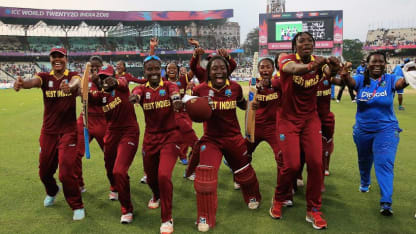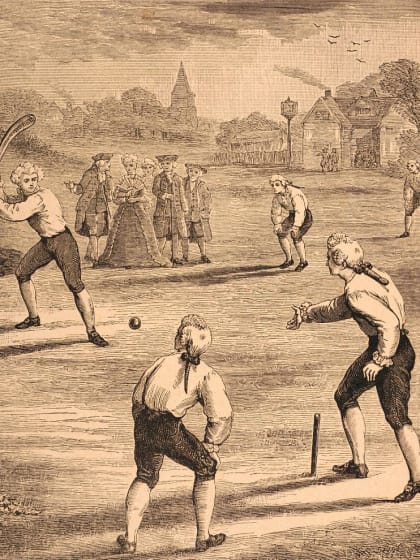Prior to 1900, the sport of cricket had slowly begun to gain prominence in India. In 1884, a team from Sri Lanka played a match in Kolkata, marking the country's first exposure to international cricket. In the same year, the Parsi Gymkhana was established in Mumbai. A year later, Kolkata hosted a match between the Presidency Club and a team from Australia.
The British sent a team to India in 1889-90 under the captaincy of G.F. Vernon. The primary objective of the tour was to play against Englishmen residing in India. However, from an Indian perspective, a significant moment came when the team played against the Parsis, who had impressed in 1888. In what became a landmark event for Indian cricket, the Parsis secured a four-wicket victory, marking the first cricket defeat suffered by the British on Indian soil.
By this time, the game had spread across the subcontinent. Cricket received a further boost in the 1890s when the Prince of Nawanagar, Kumar Shri Ranjitsinhji, dazzled English crowds with his batting. Ranjitsinhji’s elegant wristwork and unconventional shot-making were a revelation to the British, who were accustomed to a more orthodox approach. His success with Sussex in the English County Championship and later for England in Test cricket made him one of the most celebrated cricketers of his time.
In 1911, an 'All-India' team embarked on its first-ever tour of England. Sponsored and captained by the Maharaja of Patiala, the team featured the best cricketers of the era. The standout performer was left-arm spinner Baloo Palwankar, who took over a hundred wickets on the tour.
The outbreak of World War I halted international cricket visits to India during the 1910s. It was not until 1926, eight years after the war ended, that two representatives of the Calcutta Cricket Club traveled to London to attend meetings of the Imperial Cricket Conference (ICC). Technically, the CCC should not have been allowed to participate, as it did not have exclusive control over cricket in India. However, with the backing of Lord Harris, the ICC chairman at the time, the club gained recognition. One key outcome of the meeting was the Marylebone Cricket Club's (MCC) decision to send a team to India in 1926-27. Arthur Gilligan, who had captained England in the 1924-25 Ashes, was appointed captain.
A match between the visitors and the Hindus at the Bombay Gymkhana became particularly memorable. C.K. Nayudu, who had made an impression by hitting a six on his first-class debut in 1916, played an extraordinary innings. He blasted 13 boundaries and 11 sixes on his way to 153, reaching his century in just 100 minutes, leaving spectators in awe. Similarly, Prof. D.B. Deodhar's 148 for 'All-India' in an earlier match, along with strong performances from players like J.G. Navle, Wazir Ali, and Col. Mistry, made a lasting impact.
By then, cricket was not only being played widely across the subcontinent but had also reached unprecedented levels of popularity. An annual Presidency match between Europeans and Indians had been introduced in Chennai in 1915 and was played during the Pongal festivities. Other cricketing hubs included Sind, Calcutta, Lucknow, Hyderabad, and Kanpur. The Maharaja of Patiala played a key role in cricket development, building cricket grounds in Patiala and Chail and arranging for foreign coaches to train young cricketers.
Gilligan was among the key figures at a meeting held in Delhi in February 1927, alongside the Maharaja of Patiala, British businessman Grant Govan, and Anthony De Mello. Gilligan praised Indian cricket and promised to push for India's inclusion in the ICC, provided a single controlling body was established.
On 21st November 1927, a meeting in Delhi, attended by around 45 delegates from various regional cricket associations, resulted in a consensus that a Board of Cricket Control was essential. Its objectives included:
- Advancing and governing cricket across India.
- Organizing and overseeing inter-territorial, international, and domestic matches.
- Managing arrangements for visiting teams.
- Resolving inter-territorial disputes.
- Settling conflicts between affiliated cricket associations.
- Adopting, if necessary, amendments or rules set by the Marylebone Cricket Club.
A subsequent meeting at the Bombay Gymkhana on 10th December 1927 led to the formation of a ‘Provisional’ Board of Control to represent Indian cricket. The plan was for this provisional body to be dissolved once eight territorial associations were formed, which would then constitute the permanent board.
In 1928, Govan and De Mello traveled to England to present India's case for ICC membership. While their efforts were initially promising, the plan encountered setbacks due to the slow formation of territorial cricket associations. By late 1928, only six—Southern Punjab Cricket Association, Cricket Association of Bengal, Assam Cricket Association, Madras Cricket Association, and Northern India Cricket Association—had been established.
At a meeting in Mumbai in December 1928, Govan and De Mello urged the provisional board to reconsider its stance. They did not want India to miss the opportunity to host South Africa in 1929 and tour England in 1931. Their persistence paid off, and the Board of Control for Cricket in India (BCCI) was officially established. Govan was appointed its first president, while De Mello became its first secretary. Five months later, the ICC granted India Full Member status.
However, political developments on the subcontinent delayed the proposed series against South Africa and England. India had to wait until 1932 to play its first Test match.
Govan and De Mello attempted to persuade Kumar Shri Duleepsinhji, nephew of Ranjitsinhji, to captain India’s first Test team in 1932. Duleep, who had scored a century on his Test debut for England in 1930, declined the offer. Consequently, the Maharajkumar of Vizianagaram invited Jack Hobbs and Herbert Sutcliffe, two of England’s top batsmen, to play in India in 1930-31.
Initially, the Maharaja of Patiala was expected to lead the Indian squad for the 1932 tour of England. However, he withdrew, and leadership was passed to the Maharaja of Porbandar. On the eve of India’s inaugural Test at Lord’s in 1932, both Porbandar and his deputy, Prince Ghanshyamsinhji of Limbdi, stepped down, and C.K. Nayudu was appointed as India’s first Test captain.
Between 1932 and 1952, India underwent a "baptism by fire" in Test cricket, struggling to secure victories. The breakthrough finally came in 1951-52, when India won its first-ever Test match, defeating England in Chennai by an innings and eight runs. A year later, India claimed its first Test series win against Pakistan.
India’s first Test series victory abroad came in 1967-68, when they defeated New Zealand 3-1. In 1971, India achieved historic back-to-back series wins against the West Indies and England.
The country's unexpected triumph in the 1983 Cricket World Cup emboldened the BCCI to bid for the 1987 World Cup, which became the first edition of the tournament held outside England. The event was a massive success, showcasing the BCCI’s organizational capabilities.
Since then, India has gone on to win multiple ICC tournaments across formats. The BCCI has played a pivotal role in global cricket administration and has launched the Indian Premier League (IPL), the world's largest T20 league and one of the biggest sporting leagues globally. Additionally, it has established the Women’s Premier League (WPL), the most significant women's cricket league in the world.








